Blueweed identification and control
About this weed
Blueweed, also known as viper’s bugloss, is a regulated Class B noxious weed in King County. This means control is required in King County under the state noxious weed law. Blueweed is also on the Washington state quarantine list. This means it is illegal to buy, sell, or offer it for sale in the state.
Blueweed is known as Echium vulgare, and it is in the borage family.
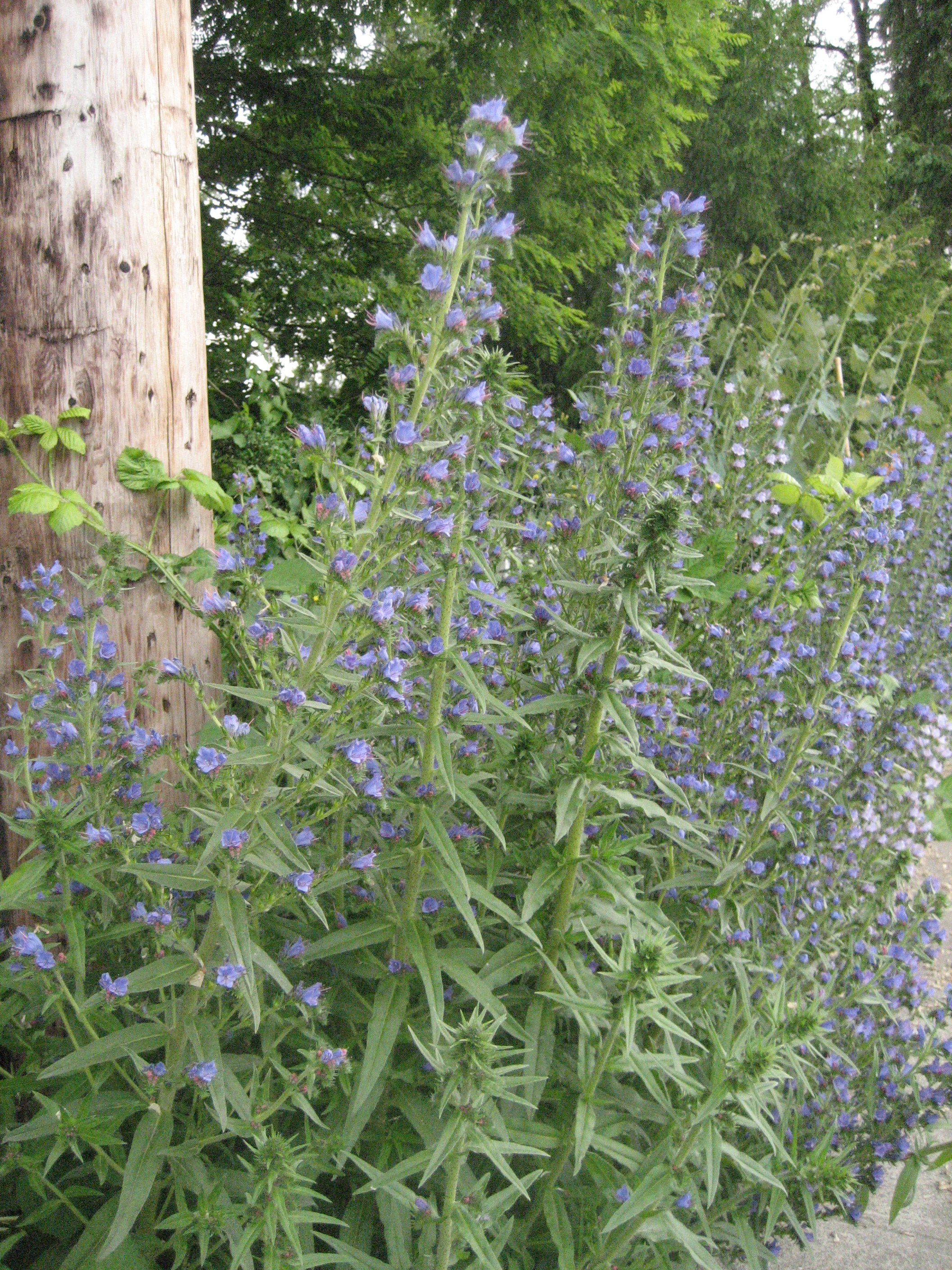
Why it’s a problem
Blueweed can take over pastureland and outcompete more palatable forage. It can also reduce valuable wildlife habitat.
Blueweed has succulent leaves, meaning they hold a lot of water. In hay fields, these leaves can cause spoilage in bales, allowing mold to grow.
Blueweed also contains pyrrolizidine alkaloids. These are toxic to livestock and humans, leading to liver disease. The hairs are very irritating and can lead to itchy skin.
Plant description
Blueweed was originally found in Europe and central Asia. It is a biennial plant (life cycle of 2 or more years). It can grow to about 3 feet tall and has a large, deep taproot (carrot-like root system).
The plant typically grows a rosette (a circular cluster of leaves on ground level) the first year and flowering stems the following years. The flowers will form along the upper part of the erect stalk. After flowering, nutlets are formed, at which time the plant will die.
The long, narrow flowers are blue. Petals are fused together at their base.
Coarsely hairy leaves are long and narrow and grow up to 6 inches long at the base of the plant, becoming smaller as they move up the stem. They are simple shaped with a rounded tip and point base and become smaller further up the stem.
Stems are rough and hairy, spreading, and upright.
Seeds develop within a nutlet. Each flower produces 4 nutlets, and each nutlet contains one seed.
Blueweed is mainly found in drier, disturbed areas, including along roadsides and in pastures.

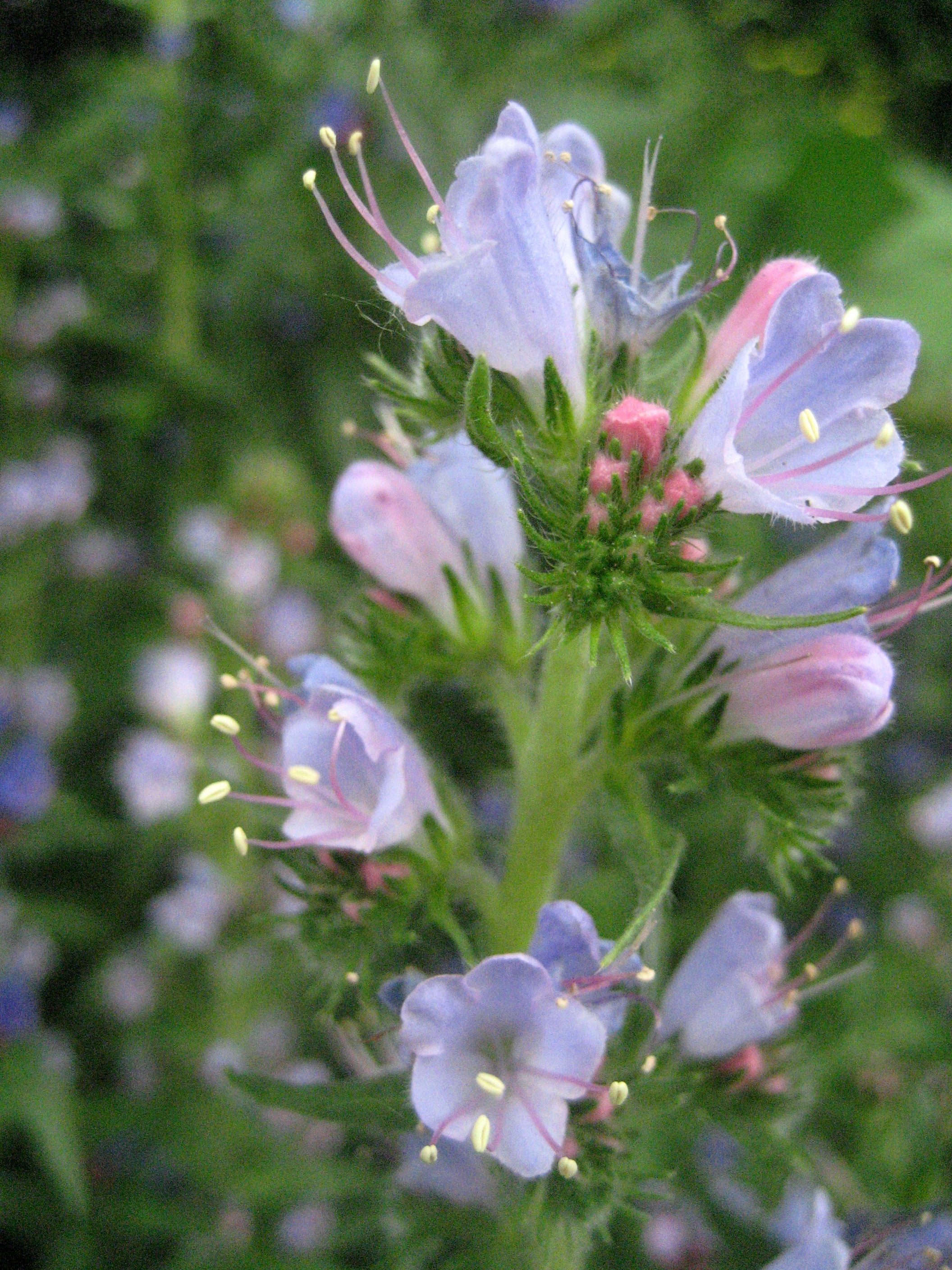
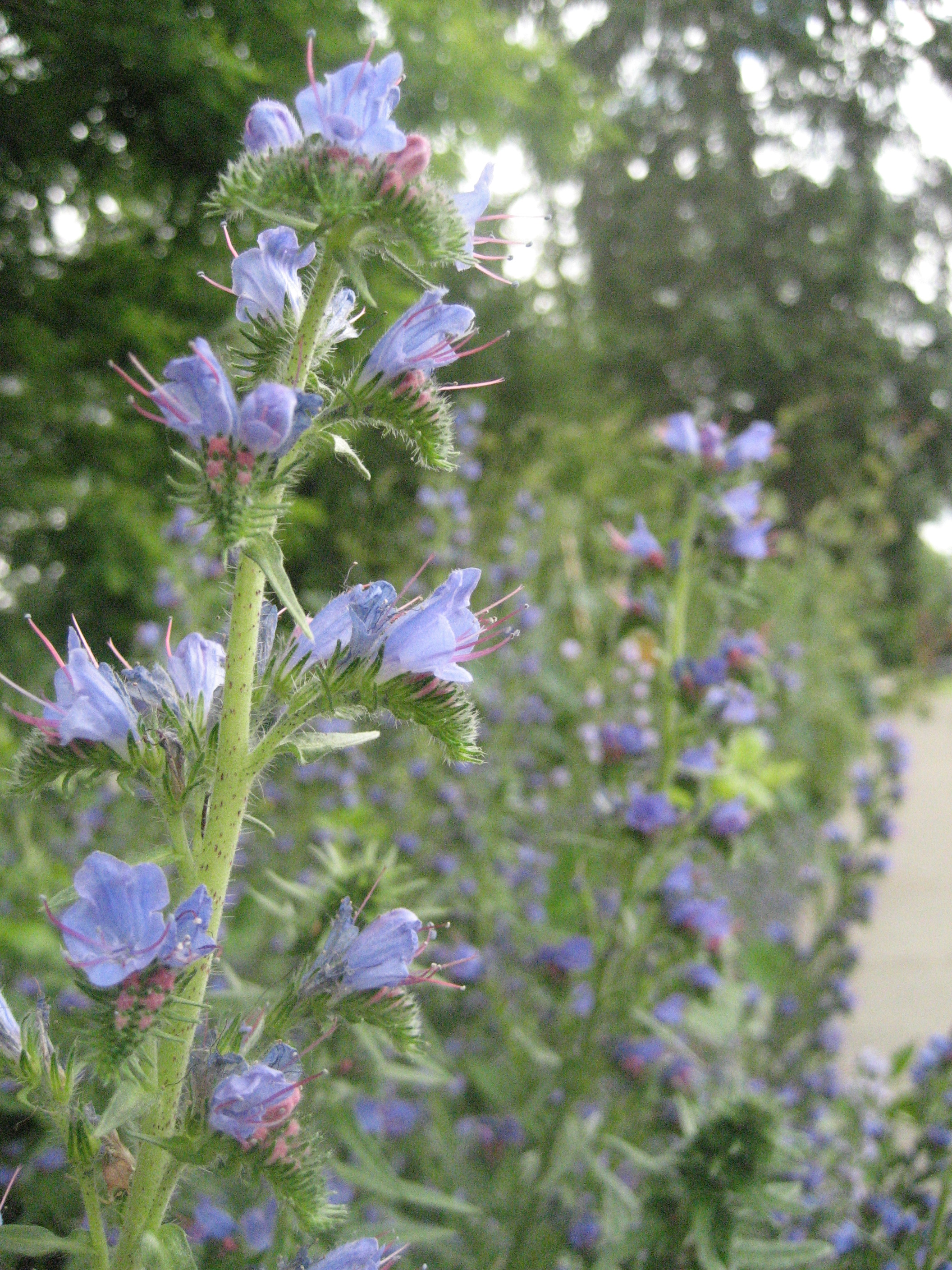
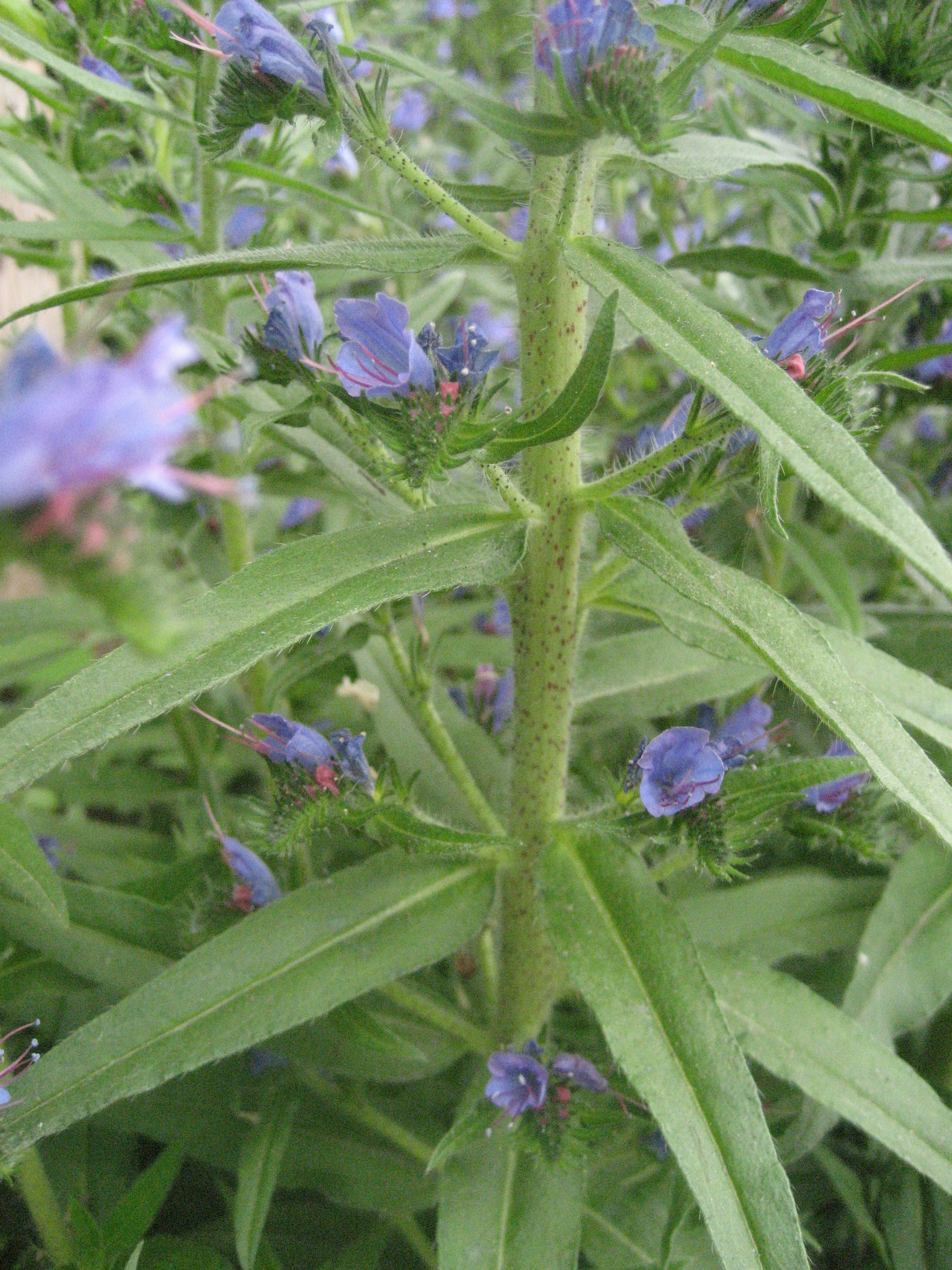
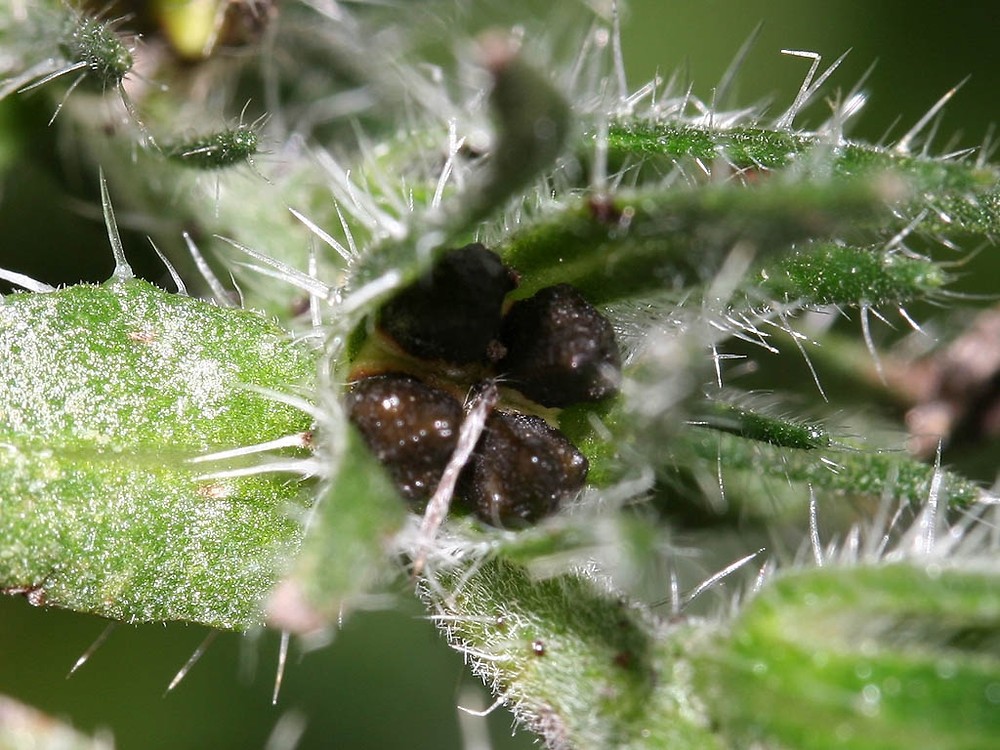
Be aware of look-alike plants
Other noxious weeds blueweed may be confused with:
When in doubt, take photos and share them with us or report them on iNaturalist.
What to do if you find it
Property owners are required to control blueweed on lands that they manage. Please let us know if you see blueweed growing in King County. We map all known locations of regulated noxious weed to help locate new infestations in time to control them.
Our program staff can provide you with site-specific advice on how best to remove it. If you need recommendations for other counties in the state of Washington, contact your local weed board.
Control methods
We recommend using a combination of methods to control noxious weeds. In areas with few weeds, it is important to act quickly before they become harder to control. Make a long-term plan as it often takes several years to get rid of most weeds. Start in the least infested areas first and then move into more heavily infested areas.
Cultural methods
The most effective method of control is preventing blueweed plants from going to seed. Blueweed can sometimes be found in wildflower seed mixtures. It is essential to check the seed list before planting.
Manual methods
Small infestations can be dug out if the soil is moist and plants are not well established. Blueweed does have large taproots (carrot-like) that make it difficult to remove manually, but it can be effective. Keep in mind that plants can regrow if not fully removed.
Blueweed’s irritating hairs also make manual control difficult. Make sure to wear the appropriate personal protective equipment.
Chemical methods
Stay safe when using herbicide:
- Always read the label before use.
- Wear a long-sleeved shirt, long pants, shoes, and eye protection.
- Follow state and local regulations.
Herbicides are very effective for blueweed control.
2,4-D is a selective herbicide that works well and is ideal when trying not to kill grass. This can be valuable as grass can fill the space left behind, helping to keep blueweed and other weeds out.
Glyphosate products are also very effective for blueweed management. However, it is non-selective and can kill neighboring plants. Replanting after control with glyphosate is recommended.
The PNW Pest Management Handbook has the most up-to-date and specific method for chemical control of blueweed.
Disposal instructions
All plant parts should be bagged and placed in the garbage.
If you'd like additional information about weed disposal:
Noxious Weed Disposal - Washington State Noxious Weed Control Board

 Translate
Translate